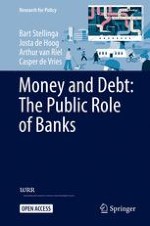Open Access 2021 | Open Access | Buch | 1. Auflage

Money and Debt: The Public Role of Banks
verfasst von: Bart Stellinga, Josta de Hoog, Arthur van Riel, Casper de Vries
Verlag: Springer International Publishing
Buchreihe : Research for Policy
Open Access 2021 | Open Access | Buch | 1. Auflage

verfasst von: Bart Stellinga, Josta de Hoog, Arthur van Riel, Casper de Vries
Verlag: Springer International Publishing
Buchreihe : Research for Policy
This Open Access book from the Netherlands Scientific Council for Government Policy explains how money creation and banking works, describes the main problems of the current monetary and financial system and discusses several reform options. This book systematically evaluates proposals for fundamental monetary reform, including ideas to separate money and credit by breaking up banks, introducing a central bank digital currency, and introducing public payment banks. By drawing on these plans, the authors suggest several concrete reforms to the current banking system with the aim to ensure that the monetary system remains stable, contributes to the Dutch economy, fairly distributes benefits, costs and risks, and enjoys public legitimacy. This systematic approach, and the accessible way in which the book is written, allows specialized and non-specialised readers to understand the intricacies of money, banking, monetary reform and financial innovation, far beyond the Dutch context.